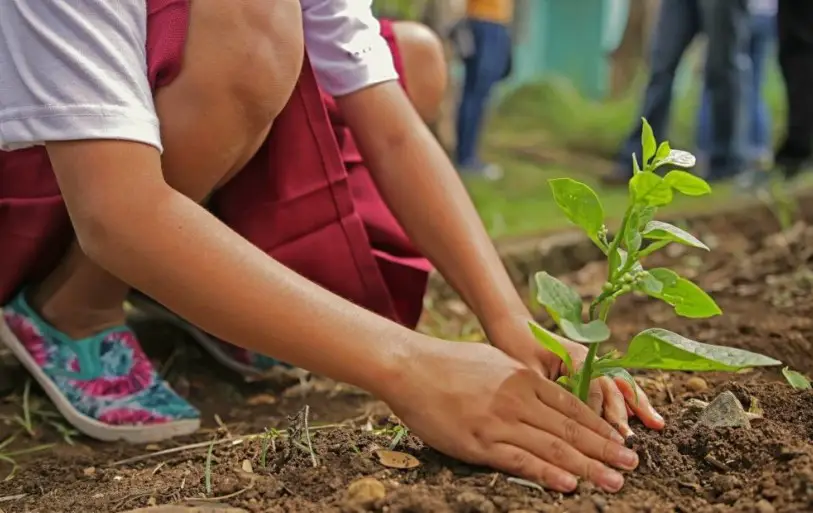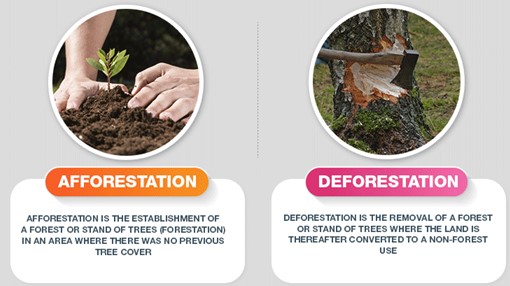The concepts of afforestation and reforestation are crucial to understanding global efforts toward environmental conservation and climate change mitigation. While both practices involve tree planting, they serve different purposes and have distinct impacts on ecosystems and biodiversity. At their core, these methodologies aim to address the critical issue of deforestation and its adverse effects on the planet.
Afforestation refers to the process of planting trees in an area where there were no previous stands of trees, essentially creating a new forest. Reforestation, on the other hand, is the replanting of trees in areas where forests have been diminished or destroyed, typically as a result of human activity or natural calamities. These efforts are vital for restoring ecosystems, enhancing biodiversity, sequestering carbon, and improving air and water quality.
Despite their shared goal of tree planting, afforestation and reforestation differ significantly in execution and outcomes. Afforestation often takes place on lands that have not been forested for a long period, sometimes for several decades or more, leading to the creation of entirely new habitats. Reforestation focuses on replenishing existing but degraded forests, thus restoring ecological balance and supporting existing wildlife. Understanding these differences is crucial for effective environmental stewardship and the strategic planning of conservation efforts.

Afforestation Explained
Definition of Afforestation
Afforestation is the process of planting trees on land that has not been forested for a long period, effectively creating a new forest. Unlike reforestation, which replenishes forests on previously deforested land, afforestation introduces forests to areas that have long been without such ecosystems.
Key Reasons for Afforestation
Afforestation serves multiple purposes, each critical to environmental health and human well-being:
- Combatting Climate Change: Trees absorb carbon dioxide, a greenhouse gas, thus reducing the impact of climate change.
- Improving Air Quality: Forests act as natural air filters, removing pollutants from the atmosphere.
- Enhancing Biodiversity: New forests provide habitats for wildlife, promoting ecosystem diversity.
- Controlling Desertification: Tree planting in arid regions helps prevent soil erosion and desert spread.
Examples and Global Significance
Globally, numerous afforestation projects have showcased the transformative power of tree planting:
- China’s Green Wall: Aimed at stopping the expansion of the Gobi Desert through the planting of millions of trees.
- Africa’s Great Green Wall: An ambitious initiative to combat desertification across the Sahara and Sahel.
These examples underscore afforestation’s role in addressing global environmental challenges.
Reforestation Defined
What Reforestation Entails
Reforestation involves planting trees on land where forests have been reduced or destroyed, typically due to human activities like logging or agriculture. The goal is to restore the forested landscape to its previous state.
Main Objectives of Reforestation
- Restoring Ecosystems: Reestablishing forests to support biodiversity and wildlife.
- Sequestering Carbon: Enhancing the capacity of forests to absorb CO2.
- Improving Water Cycles: Forests play a key role in maintaining the water cycle and ensuring clean water supplies.
Reforestation Efforts Around the World
From tropical rainforests to temperate woodlands, reforestation initiatives are crucial. Notable efforts include:
- Amazon Rainforest Reforestation: Projects aim to restore parts of the world’s largest tropical rainforest.
- North American Reforestation: Efforts focus on areas affected by logging and wildfires.
Core Differences
Distinctions in Purpose
The primary difference between afforestation and reforestation lies in their objectives: afforestation seeks to create new forests, while reforestation aims to restore existing ones.
Differences in Implementation Strategies
- Afforestation: Often involves selecting tree species that can adapt to and transform the local environment.
- Reforestation: Requires choosing species that were originally part of the ecosystem, ensuring compatibility and ecological balance.
Environmental Impact Comparison
Both practices significantly benefit the environment but in different ways. Afforestation can introduce forests to degraded lands, while reforestation helps in the recovery of ecosystems that have been lost.
Benefits
Afforestation Benefits
Combatting Desertification
Afforestation in arid regions can prevent soil erosion and halt the spread of deserts, safeguarding agricultural land and water resources.
Enhancing Biodiversity
By creating new forests, afforestation provides habitats for various species, contributing to biodiversity.
Carbon Sequestration Effects
New forests act as carbon sinks, playing a crucial role in mitigating climate change by absorbing CO2 from the atmosphere.
Reforestation Benefits
Restoring Ecosystems
Reforestation efforts focus on bringing back the original forest cover, which supports a wide range of plant and animal life.
Improving Air and Water Quality
Restored forests improve air quality by filtering pollutants and contribute to cleaner water sources through natural filtration processes.
Supporting Wildlife Habitats
By replenishing forested areas, reforestation provides vital habitats for wildlife, promoting biodiversity and ecological balance.

Challenges
Afforestation Challenges
Ecological Considerations
Implementing afforestation requires careful planning to avoid disrupting local ecosystems. Introducing non-native tree species can lead to unexpected ecological consequences, potentially harming native biodiversity.
Water Usage Concerns
Afforestation projects, especially in arid regions, must address water availability. Large-scale tree planting can significantly increase local water consumption, potentially straining scarce water resources.
Potential for Invasive Species
Selecting the wrong tree species for afforestation can lead to the introduction of invasive species. These species may outcompete native flora, altering habitat structures and reducing biodiversity.
Reforestation Challenges
Choosing the Right Species
Successful reforestation depends on planting native or locally adapted tree species. The challenge lies in identifying and sourcing the appropriate species that can thrive in the restored area without adverse effects.
Climate Change Impacts
Climate change poses a significant challenge to reforestation efforts. Changes in temperature and precipitation patterns can affect the survival and growth of newly planted forests, requiring adaptive management strategies.
Land Ownership and Legal Issues
Reforestation projects often face hurdles related to land ownership and legal rights. Securing access to land and navigating regulatory requirements can delay or complicate reforestation efforts.
Case Studies
Afforestation Success Stories
Project Examples and Outcomes
- China’s Green Wall: This project aimed to reduce desertification by planting a vast belt of trees. It has significantly reduced sandstorms and improved local ecosystems.
- Iceland’s Afforestation Effort: Once heavily deforested, Iceland has made strides in afforestation, using native and adapted species to restore landscapes and combat soil erosion.
Reforestation Achievements
Significant Reforestation Projects
- Amazon Reforestation Initiative: Efforts in the Amazon basin focus on restoring deforested areas to preserve biodiversity and indigenous cultures.
- The Billion Tree Tsunami in Pakistan: This project exceeded its goal by planting over a billion trees, revitalizing forests, and supporting local economies.
Future Directions
Technological Advancements in Tree Planting
The future of afforestation and reforestation may be shaped by technological innovations. Drones, for example, are being used to plant seeds over large areas quickly and efficiently. Genetic engineering and AI can help select the best species and planting locations to maximize survival rates and ecosystem benefits.
Policy and Global Cooperation
Addressing the challenges of afforestation and reforestation requires strong policy frameworks and international cooperation. Initiatives like the Bonn Challenge and the United Nations’ Decade on Ecosystem Restoration aim to restore degraded lands and forests globally, setting ambitious targets for countries to achieve together.
The Role of Community Involvement
Community involvement is critical to the success of afforestation and reforestation projects. Engaging local communities in planning and implementation ensures that projects meet both environmental goals and the needs of the people living in those areas. Education, participation, and benefit-sharing mechanisms can empower communities and foster long-term project sustainability.

Frequently Asked Questions
What is afforestation?
Afforestation is the initiative to grow forests on lands that previously did not contain forests for a significant amount of time. This practice aims to create new forested areas from scratch, primarily to combat desertification, improve air quality, and enhance biodiversity.
How does reforestation differ from afforestation?
Reforestation is the process of planting trees on land that was once forested but has been depleted, usually due to deforestation or natural disasters. Unlike afforestation, which creates entirely new forests, reforestation seeks to restore and rejuvenate previously existing forest lands.
Why are afforestation and reforestation important?
Both afforestation and reforestation are vital for environmental health and combating climate change. They help sequester carbon dioxide, a major greenhouse gas, improve soil health, enhance water quality, increase biodiversity, and restore habitats for various wildlife species.
Can afforestation and reforestation impact climate change?
Yes, both afforestation and reforestation can significantly impact climate change by sequestering carbon dioxide from the atmosphere. This process reduces the overall concentration of greenhouse gases, thus helping to mitigate global warming and its associated climate impacts.
Conclusion
Afforestation and reforestation are complementary strategies that play a pivotal role in our global efforts to restore ecosystems, combat climate change, and protect biodiversity. Their implementation not only helps in sequestering carbon but also in reviving the health of our planet’s lands and waters. As we advance, the importance of these practices only grows, highlighting the need for continued investment, research, and collaboration across nations and communities.
The future of environmental conservation depends significantly on our commitment to these reforestation and afforestation initiatives. By understanding their differences and contributions, we can better strategize and prioritize actions that lead to a more sustainable and resilient world. The shared goal of a greener planet calls for collective action and an unwavering dedication to nurturing the earth’s forests, both old and new.

